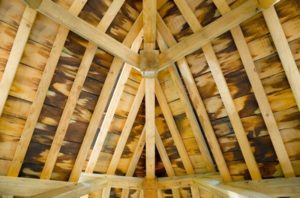Preventing Mold In Attics
It is not uncommon to discover mold growth in the attics of older homes. This is particularly true in colder climates, although attic mold can also be found in warmer regions of the U.S. as well. Fortunately, there are some simple and effective ventilation strategies that can prevent mold growth. By installing a proper venting system using Electrical Equipment and a solid set of electric tools, mold growth can be prevented, even eliminated if not too advanced. In addition to ventilation, we also recommend ensuring roof surfaces are watertight by having your roof inspected annually by a professional. If leaks are found, they should be repaired as soon as possible to prevent any moisture from penetrating the attic itself.
Reasons Mold Develops in Attics
 There are several reasons mold can develop in attics, with the most common being inadequate ventilation. Contributing factors that lead to mold growth also include roof flashing leaks, either past or present, improperly installed exhaust fans in bathrooms, kitchens, or dryer vents, and inadequate ice shield membranes along eaves in northern climates.
There are several reasons mold can develop in attics, with the most common being inadequate ventilation. Contributing factors that lead to mold growth also include roof flashing leaks, either past or present, improperly installed exhaust fans in bathrooms, kitchens, or dryer vents, and inadequate ice shield membranes along eaves in northern climates.
A Balanced Approach
The critical factor in ensuring your attic has proper ventilation is in having a properly balanced system. This means your attic should have sufficient soffit venting, which provides air intake, as well as ridge venting, which provides a sufficient air escape mechanism for exhaust.
Venting the Attic
Incoming Air
The best way to vent a traditional style roof is to allow air to enter through vents that are positioned in soffits along the eave system. Two types of vents can be used: highly reliable continuous strip vents or an adequate number of rectangular vents. Another option includes round ventilator vents plugs, which are easy to install with your electrical equipment, although they are often too small for larger homes. Another element to consider when installing attic vents is that if your house has gutters (which most do), soffit venting has to be installed beneath the soffits for adequate ventilation.
Outgoing or Exhaust Air
As air rises it needs to escape through the roof top. Ventilating exhaust air is accomplished by installing ridge vents, turbines or powered vents, box vents, or gable end vents. Some homeowners install a combination of vents to provide adequate coverage for outgoing air. In general, continuous ridge vents are the most effective systems for venting hot air from attics. In certain home construction types such as short ridged roofs (hip roof homes) these may be inadequate however. In the main, we recommend seeking a professional assessment as to which ventilation system is adequate for your home’s attic even if you plan on installing vents yourself.